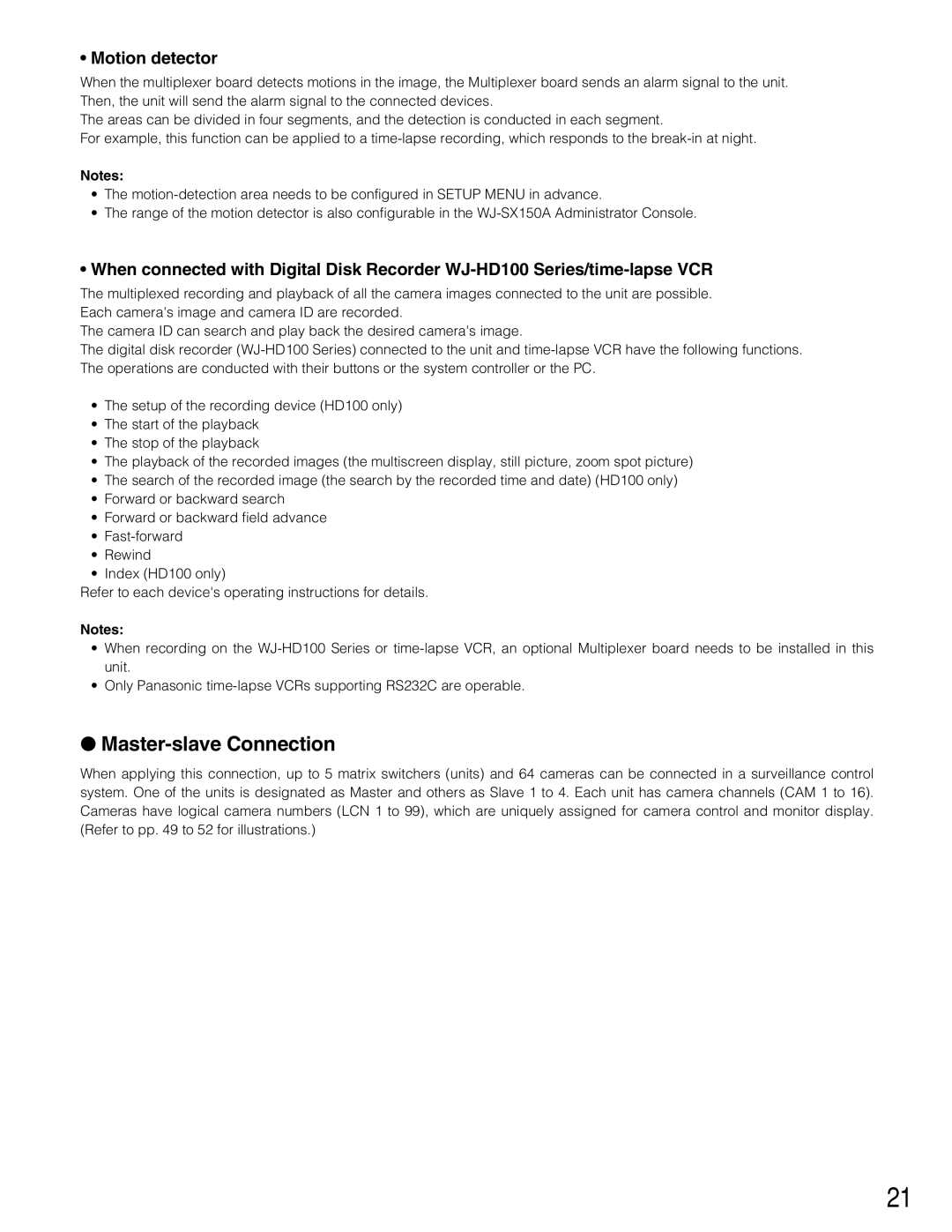•Motion detector
When the multiplexer board detects motions in the image, the Multiplexer board sends an alarm signal to the unit. Then, the unit will send the alarm signal to the connected devices.
The areas can be divided in four segments, and the detection is conducted in each segment.
For example, this function can be applied to a
Notes:
•The
•The range of the motion detector is also configurable in the
•When connected with Digital Disk Recorder
The multiplexed recording and playback of all the camera images connected to the unit are possible. Each camera's image and camera ID are recorded.
The camera ID can search and play back the desired camera's image.
The digital disk recorder
•The setup of the recording device (HD100 only)
•The start of the playback
•The stop of the playback
•The playback of the recorded images (the multiscreen display, still picture, zoom spot picture)
•The search of the recorded image (the search by the recorded time and date) (HD100 only)
•Forward or backward search
•Forward or backward field advance
•
•Rewind
•Index (HD100 only)
Refer to each device's operating instructions for details.
Notes:
•When recording on the
•Only Panasonic
●Master-slave Connection
When applying this connection, up to 5 matrix switchers (units) and 64 cameras can be connected in a surveillance control system. One of the units is designated as Master and others as Slave 1 to 4. Each unit has camera channels (CAM 1 to 16). Cameras have logical camera numbers (LCN 1 to 99), which are uniquely assigned for camera control and monitor display. (Refer to pp. 49 to 52 for illustrations.)
21
